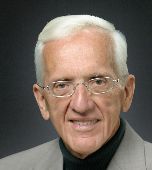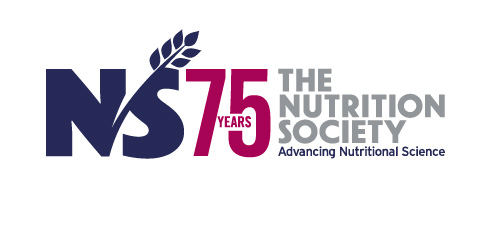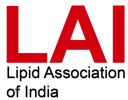Theme: Solving the Impetus of Innovations in Lipid World
Lipids 2016
Welcome Message from Dr. T. Colin Campbell

T. Colin Campbell
President of the Board of Directors
T. Colin Campbell Center for Nutrition Studies
Emeritus of Nutritional Biochemistry
Cornell University, USA
Dear Colleagues, Scientists and Friends,
It is a pleasure and privilege to invite you to our 2nd International Conference and Expo on Lipids: Metabolism, Nutrition & Health which is to be held during October 03-05, 2016 in The City Beautiful, Orlando, USA.
Although investigated for many years, the evidence on the relationship of dietary fat for heart disease, cancer, diabetes and obesity, among other ailments, is unusually confusing. Observational studies generally show that dietary fat is impressively correlated with breast cancer, colon cancer and heart disease, among other Western diseases. In contrast, the evidence for case-control and intervention type studies is much less convincing.
Some studies show that part of the confusion relates to the type of fat being investigated and part to the amount of fat being consumed. Saturated fat is widely believed to promote disease more than unsaturated fat but even this distinction depends on total dietary fat, where the opposite may be true. On type of fat, other studies suggest that omega-3 fats are beneficial while omega-6 fats are problematic.
The recommendation to decrease total dietary fat in order to prevent heart disease and cancer generally approximates 30% of total calories, which is a level generally considered “low fat” in some communities. In contrast, whole food plant-based diets containing no added fat may be about 10% total fat (all from whole plant-based foods) which is considered by some to be “extremely” low fat that no one will accommodate. In contrast, this is the level of fat that creates health far better than another dietary fat level.
There is a great need to clarify this confusion. A unified hypothesis is desperately needed. It should be one that embraces a broad range of diseases, a broad range of research observations and experimental study designs and a broad range of biochemical ‘mechanisms’. Without clarification, public policy on dietary fat will continue to be elusive and be subject to market place prejudice.
ConferenceSeries Ltd welcomes every one of the members from everywhere throughout the world to join '2nd International Conference and Expo on Lipids: Metabolism, Nutrition & Health' amid October 03-05, 2016 in Orlando, USA which incorporates brief keynote presentations, Oral talks, Poster presentations and Exhibitions.
Lipids 2016 Conference is an unquestionable requirement to join as it will give an inside and out perspective of world-class, interdisciplinary examination dialog from fundamental science scientists through clinical specialists to end up pioneers in exploration on lipid digestion system and its connection to cardiovascular sickness, diabetes, weight, atherosclerosis, metabolic disorders, immunological illnesses, and disease and so forth.
Track 1: Lipids in Molecular Medicine
The Injectable Drug Delivery Market by Formulation (Liposomes, Nanoparticles and Microspheres), Devices and Therapeutics [Diabetes and Oncology] - Global Forecasts to 2017, dissects and contemplates the real market drivers, restrictions, and chances in North America, Europe, Asia-Pacific, and Rest of the World. Worldwide injectable medication conveyance advancements market over the gauge time of 2012 to 2017. The worldwide injectable medication conveyance advancements business sector was esteemed at $22.5 billion in 2012; it is relied upon to reach $43.3 billion by 2017 at a CAGR of 14.0% from 2012 to 2017. Injectable medication conveyance advancements are the mix of two noteworthy portions; gadgets and definitions. This business sector understanding report on Liposomes gives knowledge into worldwide Liposomes market. The concentrate additionally gives data with respect to items and innovations in the field of Liposomes. Business profiles of 46 noteworthy organizations are examined in the report. The report covers more than 330 organizations that are occupied with Liposomes research and supply of items and/or administrations. The worldwide liposomes' business sector is anticipated at a CAGR of 15%, through 2005-2015.
Clinical drugs that connect with membrane lipids and that modify the composition and structure of cell membranes can transform the localization and/or activity of membrane proteins. In general, adjustments in membrane lipid structure are emulated in changes in membrane lipid activity. Several drugs used to fight against cancer, cardiovascular diseases and obesity and other pathologies, determine lipid structure in plasma membrane and they produce a concomitant alteration in the localization and activity of signaling proteins. The recent studies have resulted in identifying specific disease-provoking gene mutations and have led to improved clinical and laboratory treatments, prenatal diagnosis in lipid related diseases.
Relevant Conferences
2nd International Conference on Molecular Medicine and Diagnostics during September 26-28, 2016, Orlando, Florida, USA; International Conference on Clinical Chemistry and Laboratory Medicine during October 17-18, 2016 Chicago, Illinois, USA; International Conference on Biochemistry during October 10-12, 2016 Kuala Lumpur, Malaysia; 2nd International Conference on Transcriptomics September 12-14, 2016 Philadelphia, Pennsylvania, USA; International Conference on Next Generation Sequencing November 17-18, 2016, Atlanta, Georgia, USA 4th International Conference on Integrative Biology July 18-20, 2016 Berlin, Germany; International Symposium on Lipid Oxidation and Antioxidants 5-7 June 2016, Porto, Portugal; Phosphatases and Signalling in Health and Disease, University of Bath, UK, 20-22 June 2016; 107th AOCS Annual Meeting & Expo, May 1 - 4, 2016 Salt Lake City, Utah, USA; 12th GERLI Lipidomics Meeting, "Microbe and Host Lipids" October 23-26, 2016, Toulouse, France
Track 2: Lipid and Lipoprotein Metabolism
The total cost of reducing low-density lipoprotein includes the costs of physician services, lifestyle counseling, screening, case finding and monitoring, dietary and exercise modifications, medications, and treating side effects. The annual cost of statin drugs to reduce low-density lipoprotein cholesterol levels can range from $1,082 to $1,543 per year. The cost of follow-up or treatment-related appointments varies by type of provider, location, and practice setting. Although the cost of reducing low-density lipoprotein cholesterol levels can be high, it is much lower than the direct and indirect costs of cardiovascular disease research.
Hyperlipoproteinemia is the lipid unsettling influence of significant pertinence clinically as a result of its link with an enlarged danger of atherosclerotic cardiovascular sickness. Hoisted plasma triglycerides and low-thickness lipoproteins are specifically connected with the danger of atherosclerotic coronary illness, in spite of the fact that not as free hazard variables. Interestingly, abnormal states of high-thickness lipoprotein cholesterol have been observed to be a defensive component for the advancement of that infection, so that diminished levels constitute a danger element. Atherosclerosis is described by vascular impediment from the stores of plaque, bringing about diminished blood stream. Plaque crack and the subsequent thrombosis might prompt sudden blockage of the corridors and cause heart assault. Plasma lipoproteins have generally been gathered into five noteworthy classes, in light of their light density: chylomicrons, low-thickness lipoproteins (VLDL), halfway thickness lipoproteins (IDL), low-thickness lipoproteins (LDL), and high-thickness lipoproteins (HDL). Since lipids are not solvent in blood, they are transported as lipoproteins after response with water-dissolvable proteins in the blood. Lipids in the blood are consumed by liver cells to give vitality to cell capacities. Overabundance lipids in the blood are in the long run changed over into fat tissue. Unusually elevated amounts of triglycerides and cholesterol are speculated to be involved in solidifying of the corridors. In nondiabetic persons of ordinary weight, organization of insulin prompts an expansion in glucose up-take by insulin-delicate tissues, hindrance of lipolysis, and a reduction in serum levels of free unsaturated fats. Be that as it may, in insulin-safe states joined by hyperinsulinemia, for example, happen in heftiness and type II diabetes, there is imperviousness to brings about expanded fat breakdown and expanded serum levels of free unsaturated fats and glycerol. The expanded glycerol coming about because of lipolysis tends to drive gluconeogenesis by mass impact, along these lines prompting expanded glucose generation by the liver, further adding to hyperglycemia. Lipid stockpiling ailments are a gathering of acquired metabolic disorder in which hurtful measures of greasy materials (lipids) amass in different tissues and cells in the body. Lipid stockpiling ailments are acquired from one or both folks who convey an imperfect quality.
Relevant Conferences
2nd International Conference and Expo on Lipids: Metabolism, Nutrition & Health October 03-05, 2016 Orlando, USA; InternationalConference on Glycomics December 01-02, 2016 Atlanta, USA; 5th International Conference on Metabolomics May 16-18, 2016 Osaka, Japan;International Symposium on Lipid Oxidation and Antioxidants 5-7 June 2016, Porto, Portugal; Phosphatases and Signalling in Health and Disease, University of Bath, UK, 20-22 June 2016; 6th International Conference on Metabolomics November 28-30, 2016 Atlanta, USA; Lipid andLipoprotein Metabolism in Chronic Disease Pathogenesis and Treatment, June 12-17, 2016 Waterville Valley, NH; 57th International Conference on the Bioscience of Lipids, Chamonix, France, September 23 - 27, 2016; 107th AOCS Annual Meeting & Expo, May 1 - 4, 2016 Salt Lake City, Utah, USA; 12th GERLI Lipidomics Meeting, "Microbe and Host Lipids" October 23-26, 2016, Toulouse, France
Track 3: Protein-Lipid & Lipid- Lipid Interactions
An individual lipid particle will stay in the annular shell around a protein for just a brief timeframe. Tying to the annular shell indicates generally minimal auxiliary specificity. And the annular lipid, there is proof for other lipid atoms bound between the transmembrane alpha-helices of the protein; these lipids are alluded to as non-annular lipids. Voltage-gated channels are key transducers of film potential changes into intracellular homeless people that start numerous physiological occasions. The conformational change mutilates the state of the channel proteins adequately such that the depression, or channel, opens to concede particle flood or efflux to happen over the layer, down its electrochemical angle.
Lipid microarrays will give an incorporated learning base to the human lipidome. Exogenous fat is transported in chylomicrons from the digestive system to the liver. After passage in the circulatory system the chylomicrons are hydrolyzed by the endothelial-enslaved lipoprotein lipase. The chylomicron leftovers are quickly taken up into the liver by means of the LDL receptor and the LDL receptor-linked protein. Apolipoprotein E and lipoprotein lipase are the acknowledgment signals for these receptors. The liver uses the exogenous fat and can discharge surplus lipids by means of VLDL into the blood. The remaining VLDL leftovers can either be taken up into the liver or are hydrolyzed to LDL. Both these types of Hypercholesterolemia are the most successive and speak to significant danger elements for arteriosclerosis.
Relevant Conferences
6th Global Healthcare & Fitness Summit, December 05-07, 2016 Philadelphia, Pennsylvania, USA; GlobalSummit on Healthcare, November 17-19, 2016 Dubai UAE; 5th Asian Obesity Specialists and Endocrinologists Annual Meeting July 11-13, 2016 Kuala Lumpur, Malaysia; 5th International Conference on Agriculture & Horticulture June 27-29, 2016 Cape Town, South Africa; LIPID MAPS Annual Meeting 2016: Lipidomics Impact on Metabolic, Cancer, Cardiovascular and Inflammatory Diseases , May 17 - 18, 2016, La Jolla, CA, USA; International Symposium on Lipid Oxidation and Antioxidants 5-7 June 2016, Porto, Portugal; Phosphatases and Signalling in Health and Disease, University of Bath, UK, 20-22 June 2016; 3rd International 4 Corners of Cardiology Meeting, February 05-06 2016, Australia; 22nd International Symposium on Plant Lipids03-08 July 2016, Goettingen, Germany; 8th European Symposium on Plant Lipids 2-5 July 2017, Malmo, Sweden
Track 4: Obesity and Health
Today 66% of grown-ups and about 33% of youngsters battle with overweight and obesity. If heftiness rates stay reliable, by 2030, 51 percent of the populace will be obese. Twenty years prior, no state had a stoutness rate above 15 percent. Today there are 41 states with stoutness rates more than 25 percent, as indicated by the Trust for American's Health. Following 1980, the rate of weight in kids and young people has practically tripled. 72% of more established men and 67% of more seasoned ladies are currently overweight or stout. Heftiness is connected to more than 60 perpetual illnesses.
By American Cancer Society, 572,000 Americans kick the bucket of tumor every year, around 33% of these growth passings are connected to overabundance body weight, poor sustenance and/or physical idleness. More than 75 percent of hypertension cases are specifically connected to stoutness. Roughly 66% of U.S. grown-ups with sort 2 diabetes are overweight or have heftiness.
Relevant Conferences
International Conference on Clinical Chemistry and Laboratory Medicine during October 17-18, 2016 Chicago, Illinois, USA; International Conference on Biochemistry during October 10-12, 2016 Kuala Lumpur, Malaysia; 4th International Conference on Integrative Biology July 18-20, 2016 Berlin, Germany; World Congress on Human Genetics November 07-08, 2016 Barcelona, Spain; Phosphatases and Signalling in Health and Disease, University of Bath, UK, 20-22 June 2016; Leucine Rich Repeat Kinase 2: Ten Years Along the Road to Therapeutic Intervention, Henley Business School, UK, 11-13 July 2016; 57th International Conference on the Bioscience of Lipids, Chamonix, France, September 23 - 27, 2016; 107th AOCS Annual Meeting & Expo, May 1 - 4, 2016 Salt Lake City, Utah, USA; International Conference on Glycomics December 01-02, 2016 Atlanta, USA; 5th International Conference on Metabolomics May 16-18, 2016 Osaka, Japan
Track 5: Lipids in Signaling and Intracellular Trafficking
Understanding the mechanisms of intracellular trafficking and its interaction with other signaling molecules may lead to novel approaches in the treatment of a number of hematologic and other diseases. NIH has invested $127,980 in this specific area in 2015.
Lipid rafts/caveolae flagon formed structures are rich in proteins and additionally lipids, for example, cholesterol and sphingolipids and have a few capacities in signal transduction. They assume a part in disease cells advancement, endocytosis and the uptake of pathogenic microorganisms and certain infections. Ponders that have illustrated the part of lipid pontoons in flagging by means of bioreceptor tyrosine kinases and G protein-coupled receptors. The inositol phospholipids frame the basic premise for a mind boggling interchange of flagging reactions created, most regularly, by receptor actuation and bringing about changes in Ca +2 , protein kinase falls, and particle channel/exchanger movement. Phosphatidylinositol (PI) itself is a negligible phospholipid constituent of all eukaryote plasma films.
Despite the fact that the plasma layer might contain microdomains with an assortment of various lipid creations, cholesterol and sphingolipid rich microdomains, named lipid flatboats, have been the most strongly examined. Flatboats are hypothesized to direct protein–protein interactions by horizontally isolating proteins as per their partiality for requested layer areas. New endeavours need to create and test elective theories for lipid-intervened natural capacity are basic to propelling our comprehension of plasma layer areas and their parts in cell capacity. Cholesterol is an amphipathic particle like phospholipid moiety. It contains a hydrophobic interactions and hydrophilic interactions. Regardless of its little mass, cholesterol assumes a critical part in keeping up the trustworthiness of the film and is likewise included with cell to cell flagging procedure.
Relevant Conferences
2nd International Conference on Transcriptomics September 12-14, 2016 Philadelphia, Pennsylvania, USA; International Conference on Next Generation Sequencing November 17-18, 2016, Atlanta, Georgia, USA; 8th Global Cardiologists Annual Meeting, July 18-20 2016, Germany; 57th International Conference on the Bioscience of Lipids, Chamonix, France, September 23 - 27, 2016; Recent Advances in Lipoprotein Physiologyand Related Disease, Waterville Valley, NH, June 11-12, 2016; Contemporary Methodologies for Analysis andCharacterization of Lipids 23-24 August 2016, Stockholm, Sweden; International Symposium on Lipid Oxidationand Antioxidants 5-7 June 2016, Porto, Portugal; Phosphatases and Signalling in Health and Disease, University of Bath, UK, 20-22 June 2016; Third World Congress of Clinical Lipidology 10-12 February 2017, Brisbane, Australia; 13th Yeast Lipid Conference, 17-19 May 2017, Paris, France
Track 6. Lipids and Bioenergy
Today 66% of grown-ups and about 33% of youngsters battle with overweight and obesity. If heftiness rates stay reliable, by 2030, 51 percent of the populace will be obese. Twenty years prior, no state had a stoutness rate above 15 percent. Today there are 41 states with stoutness rates more than 25 percent, as indicated by the Trust for American's Health. Following 1980, the rate of weight in kids and young people has practically tripled. 72% of more established men and 67% of more seasoned ladies are currently overweight or stout. Heftiness is connected to more than 60 perpetual illnesses. By American Cancer Society, 572,000 Americans kick the bucket of tumor every year, around 33% of these growth passings are connected to overabundance body weight, poor sustenance and/or physical idleness. More than 75 percent of hypertension cases are specifically connected to stoutness. Roughly 66% of U.S. grown-ups with sort 2 diabetes are overweight or have heftiness.
Relevant Conferences
International Conference on Clinical Chemistry and Laboratory Medicine during October 17-18, 2016 Chicago, Illinois, USA; International Conference on Biochemistry during October 10-12, 2016 Kuala Lumpur, Malaysia; 4th International Conference on Integrative Biology July 18-20, 2016 Berlin, Germany; World Congress on Human Genetics November 07-08, 2016 Barcelona, Spain; Phosphatases and Signalling in Health and Disease, University of Bath, UK, 20-22 June 2016; Leucine Rich Repeat Kinase 2: Ten Years Along the Road to Therapeutic Intervention, Henley Business School, UK, 11-13 July 2016; 57th International Conference on the Bioscience of Lipids, Chamonix, France, September 23 - 27, 2016; 107th AOCS Annual Meeting & Expo, May 1 - 4, 2016 Salt Lake City, Utah, USA; International Conference on Glycomics December 01-02, 2016 Atlanta, USA; 5th International Conference on Metabolomics May 16-18, 2016 Osaka, Japan
Track 7: Fats - cardio metabolic risks
The economic burden of lipid disorders is substantial because of the impact of lipid levels on the risk of cardiovascular disease and coronary heart disease events. The direct and indirect costs of all types of cardiovascular disease in 2015 were estimated to be $706.2 billion. The cost of cardiovascular disease exceeds that of any other high-cost medical conditions. For example, in 2008, the estimated total cost of all cancers was $228 billion and in 2007, the cost attributable to diabetes mellitus was $174 billion.
The nature of fat is for the most part indicated by the relative substance of SFA, monounsaturated (MUFA), and polyunsaturated unsaturated fats (PUFA) including the extent or measure of vital unsaturated fats, that is, linoleic corrosive (LA) and α-linolenic corrosive (ALA),as well as the extent or measure of long-chain n-3 unsaturated fats (n-3 LCPUFA), that is, eicosapentaenoic corrosive (EPA) and docosahexaenoic corrosive (DHA). Coronary illness is perceived to be the reason for death for 80% of individuals with diabetes. Diabetes is treatable, however notwithstanding when glucose levels are under control it incredibly expands the danger of coronary illness and stroke. Hypertension has for quite some time been perceived as a noteworthy danger component for cardiovascular illness. Weight is a noteworthy danger element for cardiovascular disease and has been unequivocally connected with insulin resistance. Physical idleness is another modifiable real hazard component for insulin resistance and cardiovascular infection. Fish, plant, and nut oils are the essential dietary origin of omega-3 unsaturated fats. Eicosapentaenoic corrosive (EPA) and docosahexaenoic corrosive (DHA) are found in icy water fish, for example, salmon, mackerel, halibut, sardines, fish, and herring. Dietary admission of omega-3 unsaturated fats has declined by 80% amid the most recent 100 years, while admission of omega-6 unsaturated fats has extraordinarily expanded. Omega-3 unsaturated fats are cardioprotective for the most part because of helpful impacts on arrhythmias, atherosclerosis, irritation, and thrombosis.
Relevant Conferences
5th International Conference on Agriculture & Horticulture June 27-29, 2016 Cape Town, South Africa; 2ndInternational Congress on Biofuels & Bioenergy, September 1-3, 2016, Sao Paulo, Brazil; Euro Global Summit on Biomass August 08-10, 2016 Birmingham, UK; 57th International Conference on the Bioscience of Lipids, Chamonix, France, September 23 - 27, 2016; Recent Advances in Lipoprotein Physiology and Related Disease, Waterville Valley, NH, June 11-12, 2016; Innovative Approaches towards a Sustainable Future 18-21 September 2016 Ghent, Belgium; 107th AOCS Annual Meeting & Expo, May 1 - 4, 2016 Salt Lake City, Utah, USA; 12thGERLI Lipidomics Meeting, "Microbe and Host Lipids" October 23-26, 2016, Toulouse, France; InternationalConference on Glycomics December 01-02, 2016 Atlanta, USA; 5th International Conference on Metabolomics May 16-18, 2016 Osaka, Japan
Track 8: Lipids: Nutrition and Health
Lipids play diverse roles in the normal functioning of the body. They serve as the structural building material of all cell membranes and organelles. They provide energy for living organisms - providing more than twice the energy content compared with carbohydrates and proteins on a weight basis. They function as molecular messengers and signalling molecules in the body.
Lipids are also biomarkers of disease and are involved in several pathological conditions. Lipids are also known to play a role in genetic modification and influence risk of chronic disease.
Some of the fatty acids need to be taken in diet. This includes essential fatty acids (EFAs), linoleic acid (LA, an omega-6 fatty acid, 18:2n-6), and a-linolenic acid (LNA, an omega-3 fatty acid, 18:3n-3). These help in formation of polyunsaturated fatty acids (PUFAs) used in cellular structures and as precursors for the biosynthesis of many of the body’s regulatory molecules like long-chain PUFAs, arachidonic acid, eicosapentaenoic acid (EPA, 20:5n-3), and docosahexaenoic acid (DHA, 22:6n-3) and eicosanoids. DHA again is necessary for normal neural and retinal development in the infant and young child.
Relevant Conferences
International Conference on Clinical Chemistry and Laboratory Medicine during October 17-18, 2016 Chicago, Illinois, USA; International Conference on Biochemistry during October 10-12, 2016 Kuala Lumpur, Malaysia; 4th International Conference on Integrative Biology July 18-20, 2016 Berlin, Germany; World Congress on Human Genetics November 07-08, 2016 Barcelona, Spain; Phosphatases and Signalling in Health and Disease, University of Bath, UK, 20-22 June 2016; Leucine Rich Repeat Kinase 2: Ten Years Along the Road to Therapeutic Intervention, Henley Business School, UK, 11-13 July 2016; 57th International Conference on the Bioscience of Lipids, Chamonix, France, September 23 - 27, 2016; 107th AOCS Annual Meeting & Expo, May 1 - 4, 2016 Salt Lake City, Utah, USA; International Conference on Glycomics December 01-02, 2016 Atlanta, USA; 5th International Conference on Metabolomics May 16-18, 2016 Osaka, Japan
Track 9. Techniques Involved in Lipid Research
The fact that lipids are soluble in organic solvents, but insoluble in water, provides the food analyst with a convenient method of separating the lipid components in foods from water soluble components, such as proteins, carbohydrates and minerals. In fact, solvent extraction techniques are one of the most commonly used methods of isolating lipids from foods and of determining the total lipid content of foods.
The aim of all extraction procedures is to separate cellular or fluid lipids from the other constituents, proteins, polysaccharides, small molecules (amino acids, sugars...) but also to preserve these lipids for further analyses.
There is a great diversity of methodologies because biological tissues are not similar when considering their structure, texture, sensitivities and lipid contents. The ideal solvent for lipid extraction would completely extract all the lipid components from a sample, while leaving all the other components behind. In practice, the efficiency of solvent extraction depends on the polarity of the lipids present compared to that of the solvent.
Polar lipids (such as glycolipids or phospholipids) are more soluble in polar solvents (such as alcohols), than in non-polar solvents (such as hexane). On the other hand, non-polar lipids (such as triacylglycerols) are more soluble in non-polar solvents than in polar ones. The fact that different lipids have different polarities means that it is impossible to select a single organic solvent to extract them all. Thus the total lipid content determined by solvent extraction depends on the nature of the organic solvent used to carry out the extraction: the total lipid content determined using one solvent may be different from that determined using another solvent.
The high sensitivity of the analytical methods needed for low amounts of extracted lipids requires the use of very pure solvents and clean glassware. The chemical nature of the extracted lipids must also be taken into consideration.
Relevant Conferences
2nd International Conference on Molecular Medicine and Diagnostics during September 26-28, 2016, Orlando, Florida, USA; International Conference on Clinical Chemistry and Laboratory Medicine during October 17-18, 2016 Chicago, Illinois, USA; International Conference on Biochemistry during October 10-12, 2016 Kuala Lumpur, Malaysia; 2nd International Conference on Transcriptomics September 12-14, 2016 Philadelphia, Pennsylvania, USA; International Conference on Next Generation Sequencing November 17-18, 2016, Atlanta, Georgia, USA 4th International Conference on Integrative Biology July 18-20, 2016 Berlin, Germany; International Symposium on Lipid Oxidation and Antioxidants 5-7 June 2016, Porto, Portugal; Phosphatases and Signalling in Health and Disease, University of Bath, UK, 20-22 June 2016; 107th AOCS Annual Meeting & Expo, May 1 - 4, 2016 Salt Lake City, Utah, USA; 12th GERLI Lipidomics Meeting, "Microbe and Host Lipids" October 23-26, 2016, Toulouse, France
Track 10. Structural Diversity of Lipids
Lipids are a diverse and ubiquitous group of compounds which have many key biological functions, such as acting as structural components of cell membranes, serving as energy storage sources and participating in cell signaling pathways. Lipids may be broadly defined small molecules that originate entirely or in part from two distinct as hydrophobic or amphipathic types of biochemical subunits or "building blocks": ketoacyl and isoprene groups. The huge structural diversity found in lipids arises from the biosynthesis of various combinations of these building blocks. For example, glycerophospholipids are composed of a glycerol backbone linked to one of approximately 10 possible headgroups and also to 2 fatty acyl/alkyl chains, which in turn may have 30 or more different molecular structures. In practice, not all possible permutations are detected experimentally, due to chain preferences depending on the cell type and also to detection limits - nevertheless several hundred distinct glycerophospholipid molecular species have been detected in mammalian cells.
For years, reductionism derived from the "fluid mosaic" model of the cell membrane has portrayed membrane lipids as rather passive molecules that, whereas separating biologically relevant aqueous phases, provided an environment so that membrane proteins could fulfil the specificity and selectivity required for proper cell signaling. Whereas these roles for membrane lipids still stand, the structural diversity of lipids and their complex arrangement in supramolecular assemblies have expanded such limited, although fundamental roles. Growing developments in the field of membrane lipids help to understand biological phenomena at the nanoscale domain, and reveal this heterogeneous group of organic compounds as a long underestimated group of key regulatory molecules.
Relevant Conferences
6th Global Healthcare & Fitness Summit, December 05-07, 2016 Philadelphia, Pennsylvania, USA; GlobalSummit on Healthcare, November 17-19, 2016 Dubai UAE; 5th Asian Obesity Specialists and Endocrinologists Annual Meeting July 11-13, 2016 Kuala Lumpur, Malaysia; 5th International Conference on Agriculture & Horticulture June 27-29, 2016 Cape Town, South Africa; LIPID MAPS Annual Meeting 2016: Lipidomics Impact on Metabolic, Cancer, Cardiovascular and Inflammatory Diseases , May 17 - 18, 2016, La Jolla, CA, USA; International Symposium on Lipid Oxidation and Antioxidants 5-7 June 2016, Porto, Portugal; Phosphatases and Signalling in Health and Disease, University of Bath, UK, 20-22 June 2016; 3rd International 4 Corners of Cardiology Meeting, February 05-06 2016, Australia; 22nd International Symposium on Plant Lipids03-08 July 2016, Goettingen, Germany; 8th European Symposium on Plant Lipids 2-5 July 2017, Malmo, Sweden
Track 11. Lipids in Atherosclerosis
The role of oxidized lipids in cardiovascular diseases (CVD) has been investigated over the last three decades extensively. A number of studies have been carried out on the mechanisms, and pathways leading to the arterial atherosclerosis.
Lipid abnormalities play a critical role in the development of atherosclerosis.[3] Early experiments in animals demonstrated accelerated atherosclerosis with a high-cholesterol diet. This was followed by epidemiologic studies conducted in countries around the world that showed an increasing incidence of atherosclerosis when serum cholesterol concentrations were elevated.
Atherosclerosis is the leading cause of death in North America and within the next two decades will be the leading cause worldwide. Atherosclerosis is characterized by vascular obstruction from the deposits of plaque, resulting in reduced blood flow. Plaque rupture and the consequent thrombosis may lead to sudden blockage of the arteries and cause heart attack. High serum lipid levels, especially the elevated level of low-density lipoproteins (LDL), have been shown to be strongly related to the development of atherosclerosis. It is generally accepted that atherosclerotic lesions are initiated via an enhancement of LDL uptake by monocytes and macrophages. In the liver, uptake of plasma LDL is mediated via specific LDL receptors, but a scavenger receptor system is employed by macrophages. Plasma LDL must be modified prior to uptake by macrophages.
Relevant Conferences
2nd International Conference and Expo on Lipids: Metabolism, Nutrition & Health October 03-05, 2016 Orlando, USA; InternationalConference on Glycomics December 01-02, 2016 Atlanta, USA; 5th International Conference on Metabolomics May 16-18, 2016 Osaka, Japan;International Symposium on Lipid Oxidation and Antioxidants 5-7 June 2016, Porto, Portugal; Phosphatases and Signalling in Health and Disease, University of Bath, UK, 20-22 June 2016; 6th International Conference on Metabolomics November 28-30, 2016 Atlanta, USA; Lipid andLipoprotein Metabolism in Chronic Disease Pathogenesis and Treatment, June 12-17, 2016 Waterville Valley, NH; 57th International Conference on the Bioscience of Lipids, Chamonix, France, September 23 - 27, 2016; 107th AOCS Annual Meeting & Expo, May 1 - 4, 2016 Salt Lake City, Utah, USA; 12th GERLI Lipidomics Meeting, "Microbe and Host Lipids" October 23-26, 2016, Toulouse, France
Track 12: Plant, Microbial lipids and Essential Oils
Essential oils have been used for more than 5,000 years. Their origin can be traced back to the ancient civilization of Mesopotamia. In later years the technology of obtaining these oils spread to Egypt, India, Greece and Rome. The most commonly used essential oils are lavender, chamomile, peppermint, tea tree oil, eucalyptus, geranium, jasmine, rose, lemon, orange, rosemary, frankincense, and sandalwood.
Most of the trade in essential oils occurs in the European Union (EU), the North American Free Trade Area (NAFTA), South America and East Asia with very little or insignificant trade happening in Africa and in particular the SADC region. Over the past two decades there has been an increase in the amount of overall trade (imports and exports) in essential oils, from about just over US$616-million in 1990 to more than US$3.6-billion in 2005. The EU has inherently been the largest trader of essential oils. In 2005 it imported US$536m and exported US$765m of US$1.7bn and US $1.9 bn world imports and exports, respectively. In the same period the north Atlantic free Trade Area (nAfTA) imported US$378m worth of imports and exported US$476m. SADC’s trade, which the main area of focus in this report is insignificant in the context of world trade – just about 1% overall. In 2005 exports and imports amounted to US$15.4m and US $25.8m, respectively. The opportunities for the region to increase its share in world trade are plenty. This is despite the fact that big established multinational corporations (i.e. end-users) have developed solid commercial relationship with suppliers that have a proven record of supplying high quality products.
Lipid Peroxidation by an unmistakable bit of UV light prompts an adjustment of the plant lipids. This change renders them solid inducers of heme oxygenase expression and blend of glutathione, the most important cellular cell reinforcement. Initiated lipid separates from plants prompt inborn cancer prevention agent and detoxificationpathways of skin cells. Most solid individuals can eat ALA from plant sources like chia and flaxseeds, and it will be changed into EPA and DHA. Just seven to 15 percent of the dietary ALA might be changed over to EPA. Considerably less is changed over to DHA. Furthermore, this is in a sound youngster. Soybean, canola, wheat germ and walnut oil all have a nice measure of omega-3's, yet much larger amounts of omega-6 unsaturated fats - and this proportion of omega-3's to omega-6's is imperative. Wellbeing specialists suggest an omega-6/omega-3 proportion of around 4:1.
Relevant Conferences
World Congress on Human Genetics November 07-08, 2016 Barcelona, Spain; World Congress on Amino Acids and Proteins December 08-09, 2016 Dallas, Texas, USA; 2nd International Conference on Transcriptomics September 12-14, 2016 Philadelphia, Pennsylvania, USA; 5th Leipzig Symposium on, "Analytics and Technology" Leipzig, Germany, 9-10 March 2016; Organelle Crosstalk in Membrane Dynamicsand Cell Signalling, Edinburgh, UK; International Symposium on Lipid Oxidation and Antioxidants 5-7 June 2016, Porto, Portugal; Leucine Rich Repeat Kinase 2: Ten Years Along the Road to Therapeutic Intervention, Henley Business School, UK, 11-13 July 2016; 57th International Conference on the Bioscience of Lipids, Chamonix, France, September 23 - 27, 2016; 107th AOCS Annual Meeting & Expo, May 1 - 4, 2016 Salt Lake City, Utah, USA; International Conference on Glycomics December 01-02, 2016 Atlanta, USA; 5th International Conference on Metabolomics May 16-18, 2016 Osaka, Japan
Track 13. Lipids in Plant Research
The compartmentation of impartial lipids in plants is for the most part connected with seed tissues, where triacylglycerols (TAGs) put away inside lipid beads (LDs) serve as a key physiological vitality and carbon hold amid post germinative development. Be that as it may, some non-seed tissues, for example, leaves, blooms and natural products, additionally blend and store TAGs, yet moderately little is thought about the development or capacity of LDs in these tissues. Portrayal of LD-related proteins, for example, oleosins, caleosins, and sterol dehydrogenases (steroleosins), has uncovered astonishing components of LD capacity in plants, including cell stress reactions, hormone flagging pathways, and different parts of plant development and improvement. In spite of the fact that oleosin and caleosin proteins are particular to plants, LD-related sterol dehydrogenases likewise are available in well evolved creatures, and in both plants and warm blooded animals these compounds have been appeared to be imperative in (steroid) hormone digestion system and flagging. Also, a few different proteins known not essential in LD biogenesis in yeasts and vertebrates are preserved in plants, recommending that in any event a few parts of LD biogenesis and/or capacity are developmentally monitored.
In most plants storage lipids are in the form of triglycerides. There are a very few examples of alternative forms of storage lipid in higher plants. The most known of these is the desert shrub, jojoba, which stores its seed lipid as a liquid wax. Storage lipids may be accumulated in one or both of the main types of seed tissue, embryo or endosperm. In oilseeds such as sunflower, linseed or rapeseed, the cotyledons of the embryo are the major sites of lipid accumulation. In species such as castor bean, coriander or carrot, the endosperm is the main site of lipid accumulation.
World Congress on Human Genetics November 07-08, 2016 Barcelona, Spain; World Congress on Amino Acids and Proteins December 08-09, 2016 Dallas, Texas, USA; 2nd International Conference on Transcriptomics September 12-14, 2016 Philadelphia, Pennsylvania, USA; 5th Leipzig Symposium on, "Analytics and Technology" Leipzig, Germany, 9-10 March 2016; Organelle Crosstalk in Membrane Dynamicsand Cell Signalling, Edinburgh, UK; International Symposium on Lipid Oxidation and Antioxidants 5-7 June 2016, Porto, Portugal; Leucine Rich Repeat Kinase 2: Ten Years Along the Road to Therapeutic Intervention, Henley Business School, UK, 11-13 July 2016; 57th International Conference on the Bioscience of Lipids, Chamonix, France, September 23 - 27, 2016; 107th AOCS Annual Meeting & Expo, May 1 - 4, 2016 Salt Lake City, Utah, USA; International Conference on Glycomics December 01-02, 2016 Atlanta, USA; 5th International Conference on Metabolomics May 16-18, 2016 Osaka, Japan
Track 14: Lipidomics - What’s next?
Lipidomics has been incredibly encouraged by late advances in, and novel utilizations of, electrospray ionization mass spectrometry (ESI/MS. Lipidomic concentrates on assume a fundamental part in characterizing thebiochemical metabolism of lipid-related sickness forms through distinguishing adjustments in cell lipid digestion system, trafficking and homeostasis. The two noteworthy stages at present utilized for lipidomic investigations are HPLC-MS and shotgun lipidomics. Late extension in exploration in the field of lipidomics has been driven by the advancement of new mass spectrometry and lipidomics devices and conventions for the distinguishing proof and measurement of sub-atomic lipids in complex networks. The utilization of electrospray ionization to unrefined lipid removes without earlier fractionation-the purported shotgun methodology is one such illustration, as it has maybe been more effectively connected in lipidomics than in some other Recent innovative advances in MS and chromatography have significantly upgraded the improvements and uses of metabolic profiling of various lipids in complex natural specimens. Lipidomics not just give experiences into the particular elements of lipid species in wellbeing and infection, yet will likewise distinguish potential biomarkers for building up preventive or restorative projects for human illness.
Relevant Conferences
Euro Global Summit and Expo on Biomass August 08-10, 2016 Birmingham, UK; 2nd International Conference on Lipid Science & Technology October 03-05, 2016 Orlando, USA; International Conference on Glycomics December 01-02, 2016 Atlanta, USA; 5th International Conference and Exhibition on Metabolomics May 16-18, 2016 Osaka, Japan; 6th International Conference and Exhibition on Metabolomics November 28-30, 2016 Atlanta, USA; Lipid and Lipoprotein Metabolism in Chronic Disease Pathogenesis and Treatment, June 12-17, 2016 Waterville Valley, NH; 4th International Conference on Integrative Biology July 18-20, 2016 Berlin, Germany; International Symposium on Lipid Oxidation and Antioxidants 5-7 June 2016, Porto, Portugal; Phosphatases and Signalling in Health and Disease, University of Bath, UK, 20-22 June 2016; 107th AOCS Annual Meeting & Expo, May 1 - 4, 2016 Salt Lake City, Utah, USA
ConferenceSeries Ltd. is charmed to welcome you to the "2nd International Conference and Expo on Lipids: Metabolism, Nutrition & Health" which will be held amid October 03-05, 2016 at Orlando, USA involved tracks containing entire addresses of eminent researchers and oral presentations browsed submitted abstracts. What's more, there will be notice sessions, and numerous occasions for logical exchanges.
The topic of the gathering is "Solving the Impetus of Innovations in Lipid World" which gives a remarkable chance to researchers, academicians, students and examination researchers together and improves the information and apprehension of the digestion system and relevant issue, lipid-protein cooperations, lipid biosynthetic chemicals and transport proteins, and the regulation of the qualities including in metabolic infections.
This Conference is an unquestionable requirement go to as it will give a top to bottom perspective of world-class, interdisciplinary examination dialog from essential science analysts through clinical specialists to end up pioneers in exploration on lipid digestion system and its connection to cardiovascular illness, diabetes, weight, atherosclerosis, metabolic sicknesses, immunological maladies, and tumor and so on.
Notwithstanding fundamental and clinical examination opportunities, the workshop and symposium incorporates lively publication presentations, unpublished exploration presentations and a course program that has addresses from chief lipid science specialists from around the world furthermore takes into account upgraded cooperations prompting advancement of coordinated efforts through sharing of assets and skill. This gathering gives a collegial and casual setting for close cooperations between researchers from industry and the scholarly world.
ConferenceSeries Ltd organises 1000+ Global Events every year on Clinical, Medicine, Pharma and Science & Technology every year across USA, Europe, Asia, Middle East, Australia and UK with support from 1000 more scientific societies and Publishes 700+ open access journals which contains over 100000 eminent personalities, reputed scientists as editorial board and organizing committee members.
Importance and Scope:
Lipid issue are the expansive term for variations from the norm of cholesterol and triglycerides. Lipid variations from the norm are connected with an expanded danger for vascular illness, and particularly heart assaults and strokes. Anomalies in lipid issue are a mix of hereditary inclination and in addition the way of dietary admission. Numerous lipid issue are connected with being overweight. Lipid issue might likewise be connected with different sicknesses including diabetes. There is gathering prove that administration of cholesterol and triglyceride issue is connected with the lessened danger for heart assaults and strokes.
Today 66% of grown-ups and almost 33% of youngsters battle with overweight and corpulence .If heftiness rates stay reliable, by 2030, 51 percent of the populace will be obese.Twenty years prior, no state had a stoutness rate above 15 percent. Today there are 41 states with corpulence rates more than 25 percent, as recorded by the Trust for American's Health. Subsequent to 1980, the rate of weight in youngsters and teenagers has practically tripled.72% of more seasoned men and 67% of more seasoned ladies are presently overweight or large. Heftiness is connected to more than 60 constant ailments. By American Cancer Society, 572,000 Americans kick the bucket of malignancy every year, around 33% of these tumor passings are connected to overabundance body weight, poor sustenance and/or physical idleness. More than 75 percent of hypertension cases are straightforwardly connected to weight. Around 66% of U.S. grown-ups with sort 2 diabetes are overweight or have heftiness.
See more at conference series.com
Importance and Scope:
Lipid disorders are the broad term for abnormalities of cholesterol and triglycerides. Lipid abnormalities are associated with an increased risk for vascular disease, and especially heart attacks and strokes. Abnormalities in lipid disorders are a combination of genetic predisposition as well as the nature of dietary intake. Many lipid disorders are associated with being overweight. Lipid disorders may also be associated with other diseases including diabetes, the metabolic syndrome (sometimes called the insulin resistance syndrome). There is accumulating evidence that management of cholesterol and triglyceride disorders is associated with the reduced risk for heart attacks and strokes. This is especially true in patients seen by endocrinologists who have diabetes mellitus or other problems associated with obesity.
Elevated total cholesterol is most commonly a problem in patients who have elevated LDL cholesterol levels. Moderate elevations of LDL cholesterol are more common. These moderate elevations are still associated with heart disease risk. There are well established standards for what the targets of LDL cholesterol should be based on risk adjustment profiles. For example, young people with no heart disease risk factors have higher LDL cholesterol targets than patients who have diabetes or established heart disease.
Hypertriglyceridemia is associated with increased heart disease risk. Hypertriglyceridemia is commonly associated with obesity and diabetes mellitus. The medications used for treating triglycerides are often different than those used to lower LDL cholesterol. Treatment of contributors to high triglycerides including reduction in body weight and the management of diabetes mellitus are also important. Some medications used to lower blood sugar will also have a favourable effect on triglycerides. Isolated low cholesterol, low HDL cholesterol is quite uncommon. Most of the time low HDL cholesterol is associated with high triglycerides. It is well known that low HDL cholesterol contributes to heart disease risk. Exercise is important in helping to raise HDL cholesterol.
The metabolic syndrome is a term to describe patients who have central obesity, elevations of blood sugar (including diabetes), elevations in blood pressure as well as a lipid disorder characterized as high triglycerides, low HDL (and often mildly elevated LDL).
Epidemiology of Condition/Disease:
Between 2005 and 2006, about 21% of adults aged 20 years and older in the United States had high levels of low-density lipoprotein cholesterol. Clinical studies have repeatedly shown a strong and graded relationship between increasing levels of low-density lipoprotein cholesterol ("bad" cholesterol) and increasing risk of coronary heart disease events. Low levels of high-density lipoprotein cholesterol levels are strongly associated with increased risks of coronary heart disease. Evidence from clinical trials suggests that increasing high-density lipoprotein cholesterol ("good" cholesterol) levels reduces the risk of coronary heart disease.
Abnormal lipid levels contribute to the development of cardiovascular diseases, including coronary heart disease, stroke, and coronary atherosclerosis. Coronary heart disease, which kills more Americans than any other single disease, can lead to angina pectoris (heart pain), heart attack, or both. One American has a coronary attack about every 25 seconds, and about 34% of people who experience a coronary attack will die from it in any given year. At age 40, a man in the United States has a 49% chance and a woman has a 32% chance of having a coronary heart disease event (such as a heart attack) in his or her lifetime.
Why Orlando??
Depending on the Compound annual growth rate lipid disorders market America stands in first rank next comes European countries and Asia. So the Lipids 2016 in going to be held in America
Obesity has continued to grow within the United States. Two out of every three Americans are considered to be overweight or obese. During the early 21st century, America often contained the highest percentage of obese people in the world. Obesity has led to over 120,000 preventable deaths each year in the United States. An obese person in America incurs an average of $1,429 more in medical expenses annually. Approximately $147 billion is spent in added medical expenses per year within the United States.
Conference Highlights:
Lipids in Molecular Medicine
Lipids in Signaling and Intracellular Trafficking
Protein-Lipid and Lipid-Lipid Interactions
Lipid and Lipoprotein Metabolism
Fats - Cardio metabolic Risk
Obesity and Health
Plant, Microbial lipids, Essential Oils – Future vision
Lipids and Bioenergy
Lipidomics - What’s next?
Why to attend:
Lipids 2016 could be an exceptional event that brings along a novel and International mixture of giant and medium lipid research analysis, leading universities and Companies establishments creating the conference an ideal platform to share expertise, foster collaborations across trade and world, and assess rising technologies across the world. World-renowned speakers, the most recent techniques, tactics, and the newest updates in the field of lipids science and Novel treatment methods for CVD’s and Obesity are hallmarks of this conference.
A Unique Opportunity for Advertisers and Sponsors at this International event:
http://lipids.conferenceseries.com/sponsors.php
Major Diabetic and Obesity Associations in USA:
American Society for Metabolism and bariatric Surgery
National Institute of Neurological Disorders and Stroke
National Niemann-Pick Foundation
National Organization for Rare Disorders
National Tay-Sachs and Allied Diseases Association
International Association for the Study of Obesity
American Diabetes Association
American Heart Association
International Association for the Study of Obesity
Association for Coordination and Research in Obesity and Nutrition
American Association of Diabetes Educators (AADE)
Information centers and Institutes in USA and Abroad:
The Academy for Eating Disorders
The Academy of Nutrition and Dietetics
American Council on Exercise
American Physiological Society
American Society for Nutrition
Canadian Obesity Network
Centers for Disease Control
European Association for the Study of Obesity
Harvard School of Public Health - The Obesity Prevention Source Website
International Obesity Task Force
National Board of Physician Nutrition Specialists (ABPNS)
Obesity Action Coalition
S.T.O.P Obesity Alliance
Weight Control Information Network
CDC: Healthy Youth
CDC: Overweight and Obesity
F as in Fat
Family and Weight Loss
KidsHealth.org - Nutrition & Fitness Center
National Heart, Lung, and Blood Institute of the National Institutes of Health
National Diabetes Information Clearinghouse
Shape Up America
US Department of Health and Human Services: Childhood Obesity
Yale Rudd Center for Food Policy & Obesity
Yale Rudd Center for Food Policy & Obesity
Research Centers and Universities involved in USA:
Aberdeen Centre for Energy Regulation and Obesity (ACERO)
Mayo Clinic & Foundation for Medical Education and Research
Medical University of South Carolina Weight Management Center
Michigan Metabolomics and Obesity Center
The Minnesota Obesity Center
Monell Chemical Senses Center
The National Institute of Diabetes and Digestive and Kidney Diseases of the National Institutes of Health
The New York Obesity Research Center
Obesity Research Center, Boston Medical Center
Pennington Biomedical Research Center
University of Alabama at Birmingham Department of Nutrition Sciences (and Obesity Research Center)
University of Colorado Center for Human Nutrition
University of North Carolina Nutrition Obesity Research Center
University of Pennsylvania Center for Weight and Eating Disorders
Companies associated with Lipids in USA:
Zafgen Inc
VIVUS Inc
Entero Medics Inc
Arena Pharmaceuticals Inc
Life Time Fitness Inc
Medifast Inc
Weight Watchers International Inc
GNC Holdings Inc
Vitamin Shoppe Inc
Statistics:
Economic Burden of Condition/Disease in USA:
The economic burden of lipid disorders is substantial because of the impact of lipid levels on the risk of cardiovascular disease and coronary heart disease events. The direct and indirect costs of all types of cardiovascular disease in 2015 were estimated to be $706.2 billion. The cost of cardiovascular disease exceeds that of any other high-cost medical conditions. For example, in 2008, the estimated total cost of all cancers was $228 billion and in 2007, the cost attributable to diabetes mellitus was $174 billion.
Heart disease and stroke are not only a major cause of premature death in persons younger than 65 years but also are major causes of serious disability in the United States. The indirect costs of cardiovascular disease, including those related to lost productivity, are enormous. It is estimated that the indirect cost of cardiovascular disease will total more than $279.1 billion in 2014.
The cost of implementing a lipid screening program varies by location, provider base, method of screening, which cholesterol measurements are taken, and other factors. The average cost of a single cholesterol or lipid profile test is relatively low but the cumulative costs of screening can be substantial, especially if all recommended screening and follow-up procedures are followed. In 2008, the private-sector cost of annual visits to lower LDL cholesterol averaged $74 per session.
Estimated Cost of Counseling and Treatment:
The total cost of reducing low-density lipoprotein includes the costs of physician services, lifestyle counseling, screening, case finding and monitoring, dietary and exercise modifications, medications, and treating side effects. The annual cost of statin drugs to reduce low-density lipoprotein cholesterol levels can range from $1,082 to $1,543 per year. The cost of follow-up or treatment-related appointments varies by type of provider, location, and practice setting. Although the cost of reducing low-density lipoprotein cholesterol levels can be high, it is much lower than the direct and indirect costs of cardiovascular disease.
In 2002, the National Cholesterol Education Program (NCEP) panel found that, on the basis of current retail prices for lipid-lowering drugs, low-density lipoprotein-lowering drug therapy is highly cost-effective for persons with established coronary heart disease (including a prior coronary heart disease event); cost-effective for the primary prevention of coronary heart disease in persons with a coronary heart disease risk equivalent (the person does not have coronary heart disease but does have an absolute 10-year risk of developing major coronary events, such as myocardial infarction and coronary death, equal to that of persons with coronary heart disease), and those at high risk for coronary heart disease; and acceptable for the primary prevention of coronary heart disease in persons whose 10-year risk of "hard coronary heart disease" (heart attack and death from coronary heart disease) is between 10% and 20%.
The National Cholesterol Education Program recommends using dietary therapy, which is more cost-effective than low-density lipoprotein-lowering drugs, as the first-line therapy in persons with a 10-year risk of coronary heart disease that is less than 10% per year.
Preventive Intervention Information:
Purpose of Screening, Counseling, and Treatment:
Screening for lipid disorders allows patients and clinicians to begin lipid-lowering treatment before cardiovascular disease develops or progresses. Most patients agree to be screened for lipid disorders, even when the screening involves fasting.
Benefits and Risks of Intervention:
Clinical trials have shown that reducing low-density lipoprotein levels reduces coronary heart disease risk, but the benefits of increasing high-density lipoprotein levels have not yet been fully demonstrated. In short-term clinical trials, a 1% reduction in low-density lipoprotein cholesterol levels, on average, reduced the risk of hard coronary heart disease events by about 1%. Persons who take low-density lipoprotein cholesterol-lowering drugs for about 5 years reduce their low-density lipoprotein levels by approximately 30% and decrease their risk of cardiovascular disease, including heart attacks, by about 30%. However, only about half of those who would benefit from lipid treatment receive it.
In persons with established coronary heart disease, low-density lipoprotein-lowering therapy reduces risk of stroke by about 30%. Statin therapy for the primary and secondary prevention of cardiovascular disease can reduce adverse cardiovascular events (including heart attacks and strokes) by 32% among patients aged 65 and older. Primary prevention trials using statins have shown a significant reduction in coronary heart disease mortality, no increase in non-coronary heart disease mortality, and a strong trend toward lower overall mortality.
Target Audience:
Scientists and Doctors
Healthcare Professionals
Pharmaceutical researchers
Clinical organizations
Educational institutes
Academic Professionals
Pharma Industries
Manufacturing Medical Devices Companies
Medical Colleges
References:
1. U.S. Preventive Services Task Force. Lipid disorder screening. Summary of Recommendations. Rockville, MD: Agency for Healthcare Research and Quality; 2008. Available at:http://www.ahrq.gov/clinic/uspstf/uspschol.htm. Accessed July 24, 2011.
2. National Cholesterol Education Program Expert Panel on Detection, Evaluation, and Treatment of High Blood Cholesterol in Adults. Third report of the National Cholesterol Education Program (NCEP) Expert Panel on Detection, Evaluation, and Treatment of High Blood Cholesterol in Adults (Adult Treatment Panel III): final report.Circulation. 2002;106:3143-3421.
3. Kulkina EV, Yoon PW, Keenan NL. Trends in high levels of low-density lipoprotein cholesterol in the United States, 1999-2006. JAMA. 2009;302(19):2104-2110.
4. Kahn R, Robertson RM, Smith R, Eddy D. The impact of prevention on reducing the burden of cardiovascular disease. Circulation. 2010; 2008;118:576-585.
5. Grundy SM, Cleeman JI, Merz CN, Brewer HB Jr, Clark LT, Hunninghake DB, Pasternak RC, Smith SC Jr, Stone NJ. Implications of recent clinical trial for the National Cholesterol Education Program Adult Treatment Panel III guidelines. Circulation. 2004;110(6):763.
6. Lloyd-Jones D, Adams RJ, Brown TM, Carnethon M, Dai S, De Simone G, et al; on behalf of the American Heart Association Statistics Committee and Stroke Statistics Subcommittee. Heart disease and stroke statistics?2010 update: a report from the American Heart Association. Circulation. 2010;121:e46-e215. Available at:http://circ.ahajournals.org/cgi/reprint/CIRCULATIONAHA.109.192667. Accessed July 9, 2010.
7. Pignone MP, Phillips CJ, Atkins DA, Teutsch SM, Mulrow CD, KN. L. Screening and treating adults for lipid disorders: a summary of the evidence. Am J Prev Med. 2001;20(3 Suppl):77-89.
8. Soler RE, Leeks KD, Razi S, Hopkins DP, et al., and Community Guide Task Force. A Systematic Review of Selected Interventions for Worksite Health Promotion: The Assessment of Health Risks with Feedback. Am J Prev Med. 2010;38(2S):S237?S262.
9. Prosser LA, Stinnett AA, Goldman PA, et al. Cost-effectiveness of cholesterol-lowering therapies according to selected patient characteristics. Ann Intern Med. 2000;132:769-779.
10. National Guidelines Clearinghouse. Screening and management of lipids. Available at:http://www.guideline.gov/content.aspx?id=14421&search=lipids. Accessed May 27, 2009.
11. Helfand M, Carson S. Screening for Lipid Disorders in Adults: Selective Update of 2001 U.S. Preventive Services Task Force Review. Evidence Synthesis No. 49. Rockville, MD: Agency for Healthcare Research and Quality, April 2008. AHRQ Publication no. 08 05114-EF-1. Available athttp://www.ncbi.nlm.nih.gov/books/NBK33494/.
12. Morgan JM, Capuzzi DM. Hypercholesterolemia: the NCEP Adult Treatment Panel III Guidelines. Geriatrics.2003;58:33-38.
13. Pignone MP, Ammerman A, Fernandez L, Orleans T, Pender N, Woolf S, Lohr KN, Sutton S. U.S. Preventive Services Task Force. Counseling to Promote a Healthy Diet in Adults. Summary of the Evidence. Rockville, MD: Agency for Healthcare Research and Quality;2003. Available athttp://www.uspreventiveservicestaskforce.org/uspstf/uspsdiet.htm.
14. Cohen JD. A population-based approach to cholesterol control. Am J Med. 1997;102:23-25.
15. Matson Koffman D. Lipid disorders evidence-statement: screening, counseling, and treatment. In: Campbell
Conference Highlights
- Lipids in Molecular Medicine
- Lipids in Signaling and Intracellular Trafficking
- Protein-Lipid & Lipid- Lipid interactions
- Lipid and Lipoprotein Metabolism
- Fats - Cardio Metabolic Risks
- Obesity and Health
- Plant, Microbial lipids and Essential Oils
- Lipids and Bioenergy
- Lipidomics - What’s next?
- Techniques Involved in Lipid Research
- Structural Diversity of Lipids
- Lipids in Atherosclerosis
- Lipids: Nutrition and Health
- Lipids in Plant Research
To share your views and research, please click here to register for the Conference.
To Collaborate Scientific Professionals around the World
| Conference Date | October 03-04, 2016 | ||
| Sponsors & Exhibitors |
|
||
| Speaker Opportunity Closed | Day 1 | Day 2 | Day 3 |
| Poster Opportunity Closed | Click Here to View | ||
Useful Links
Special Issues
All accepted abstracts will be published in respective Our International Journals.
- Journal of Glycomics & Lipidomics
- Journal of Nutritional Disorders & Therapy
- Bioenergetics: Open Access
Abstracts will be provided with Digital Object Identifier by





















